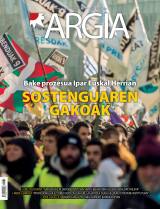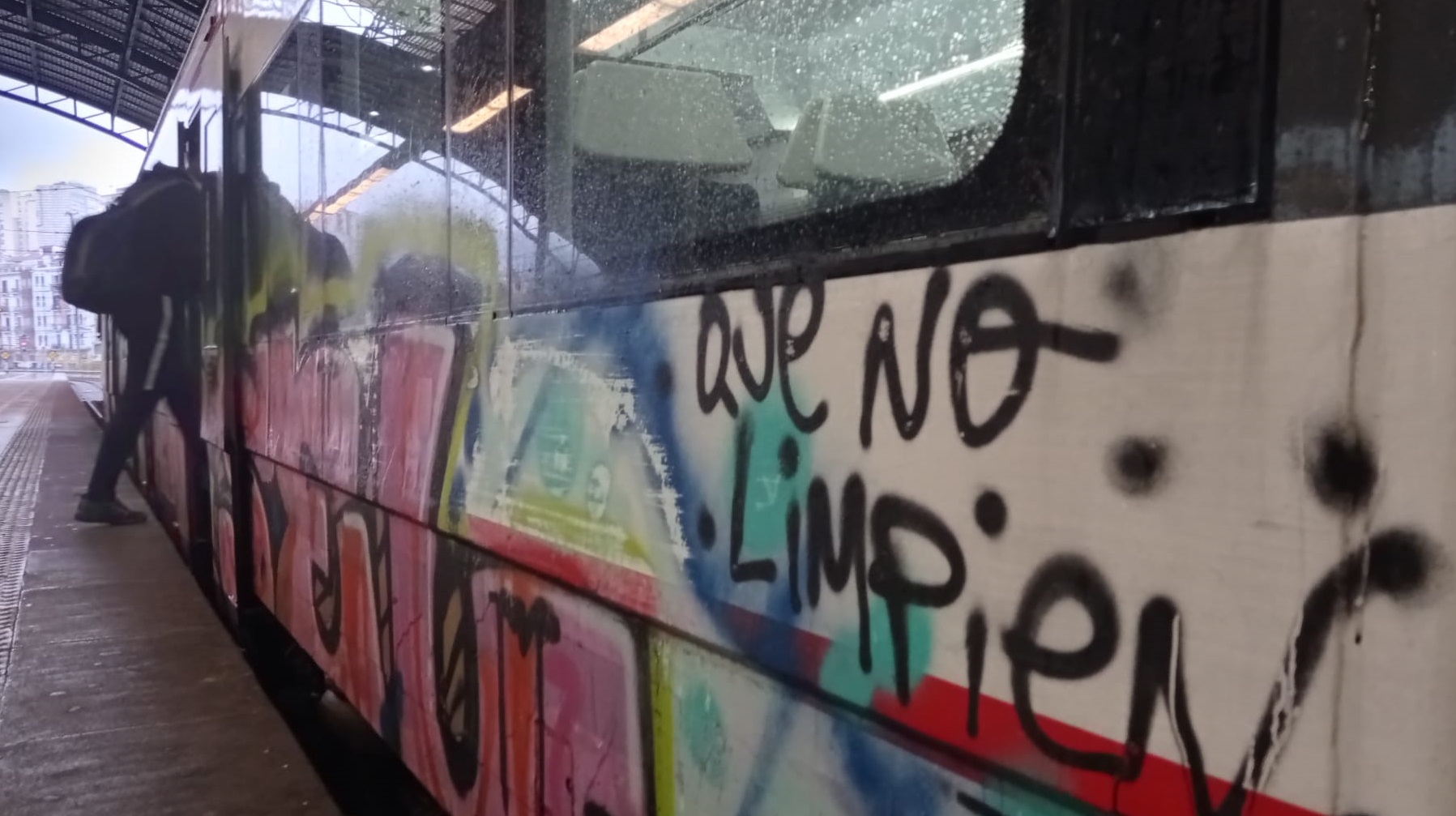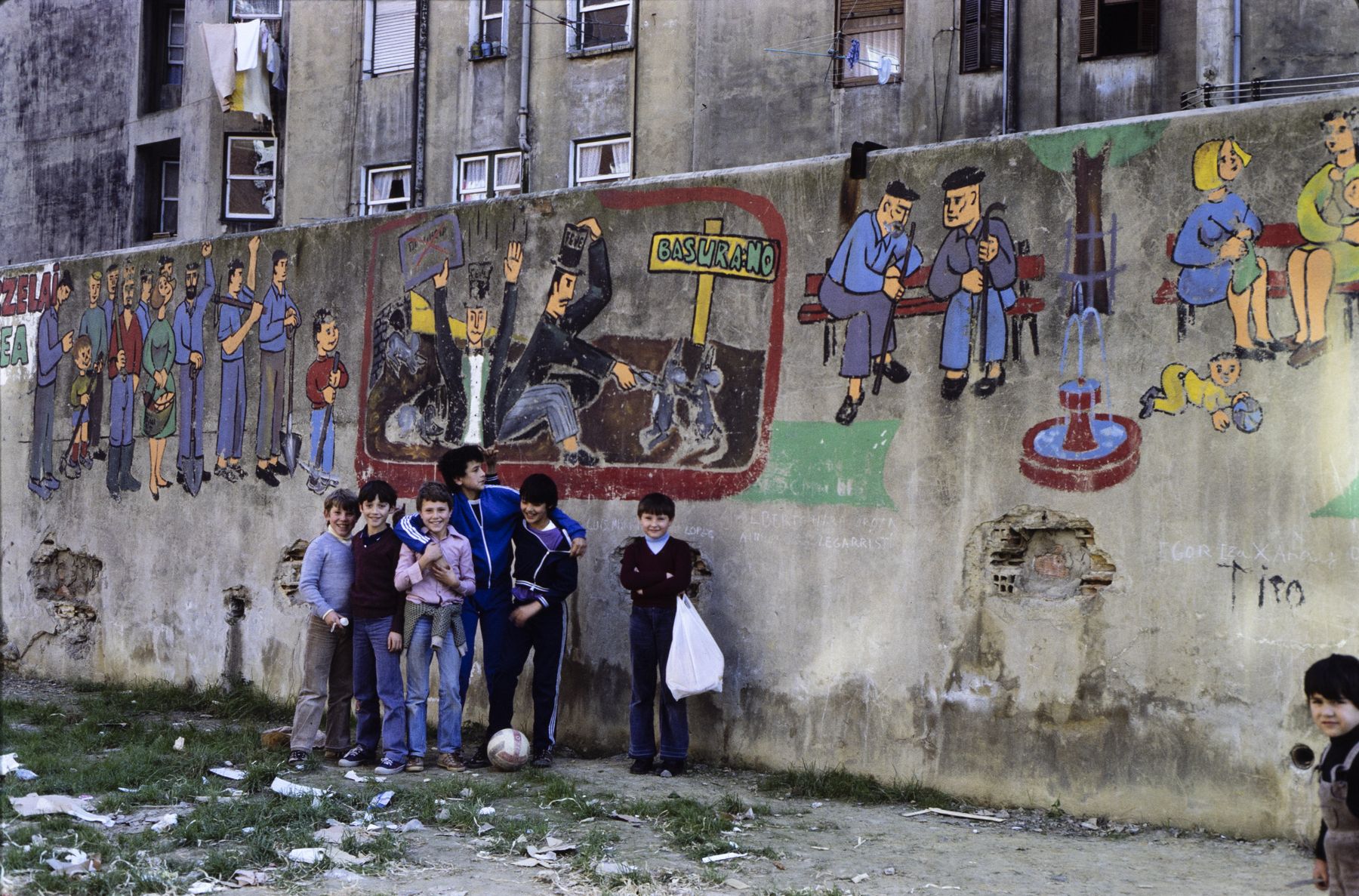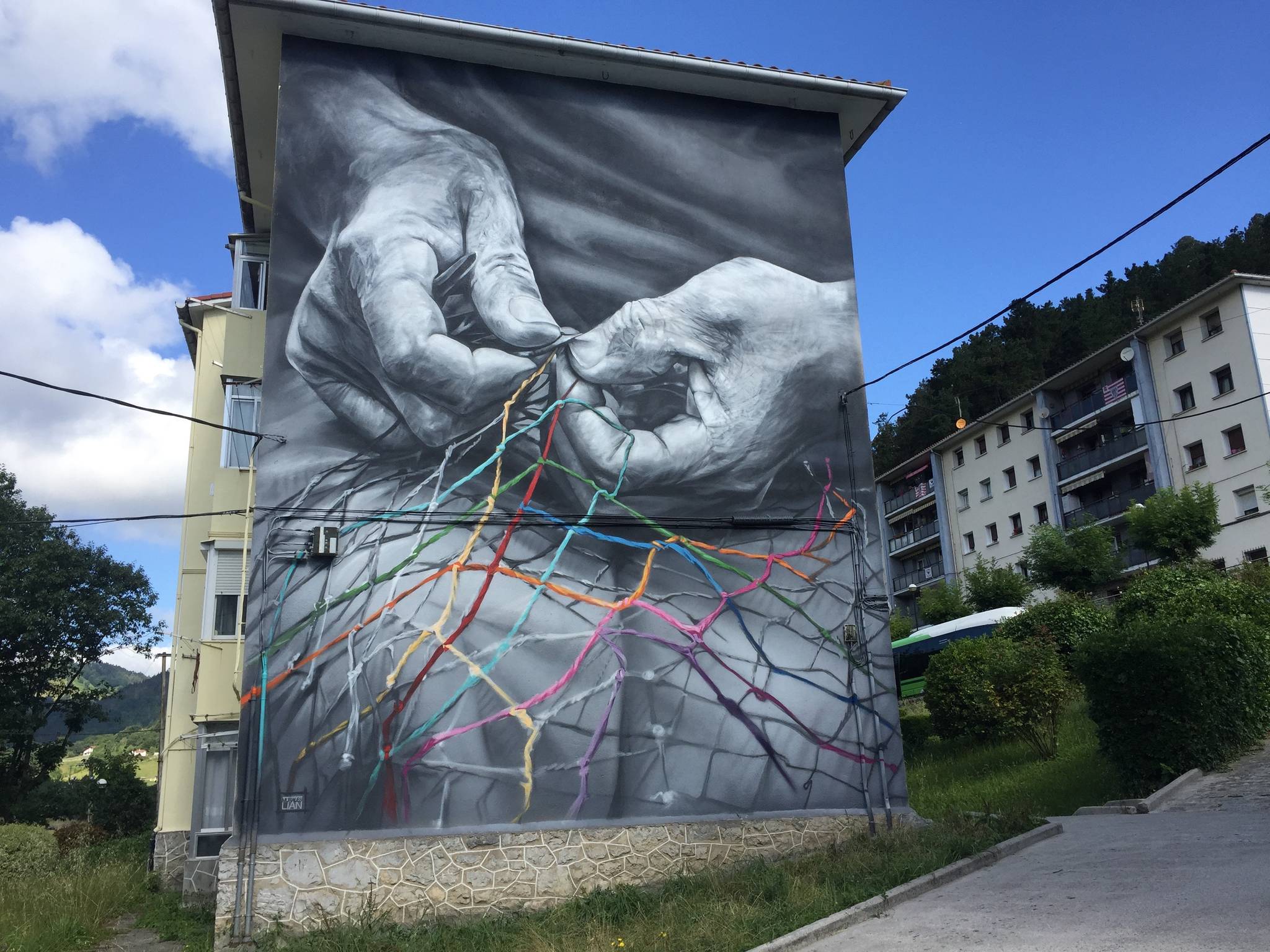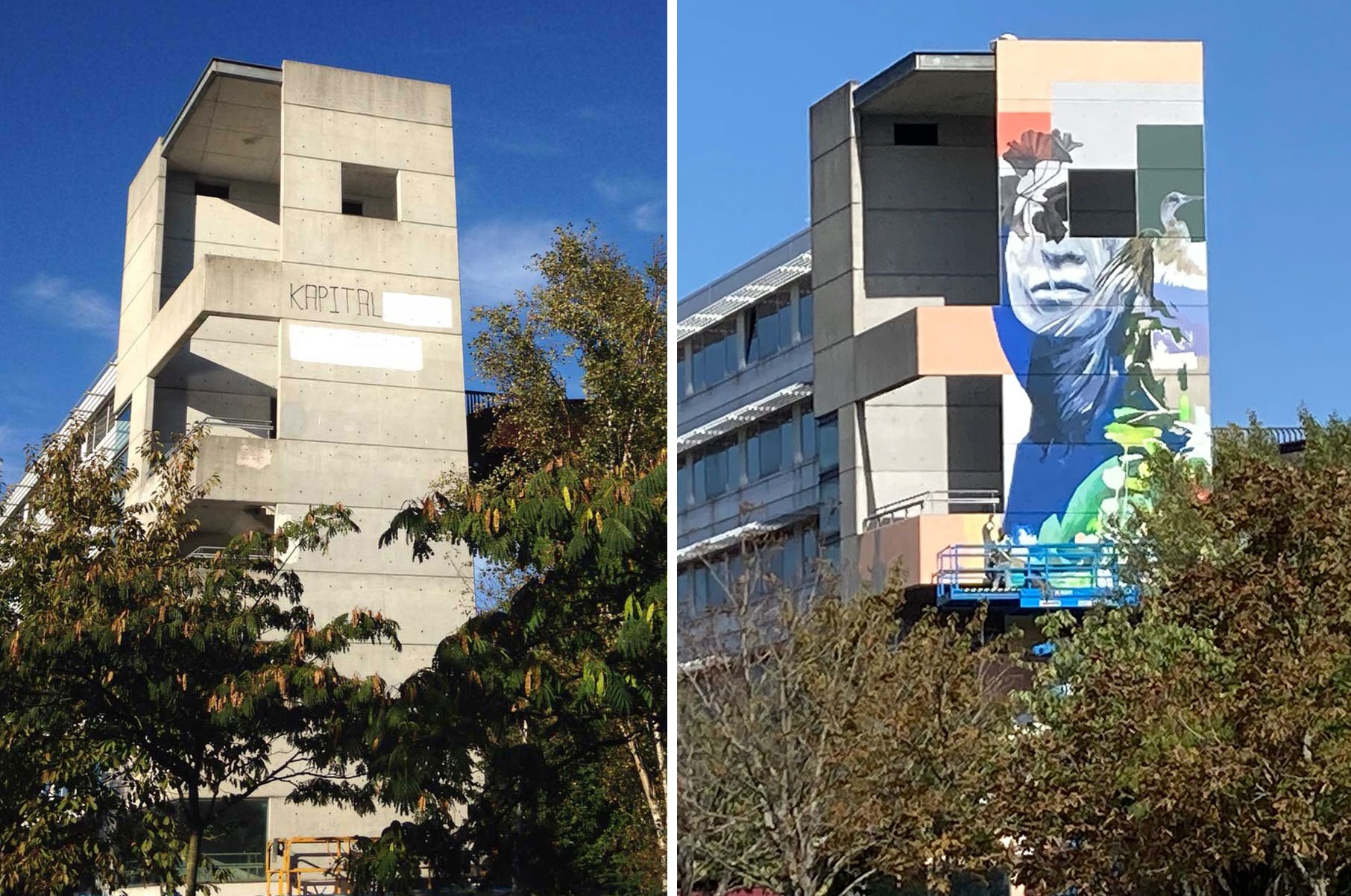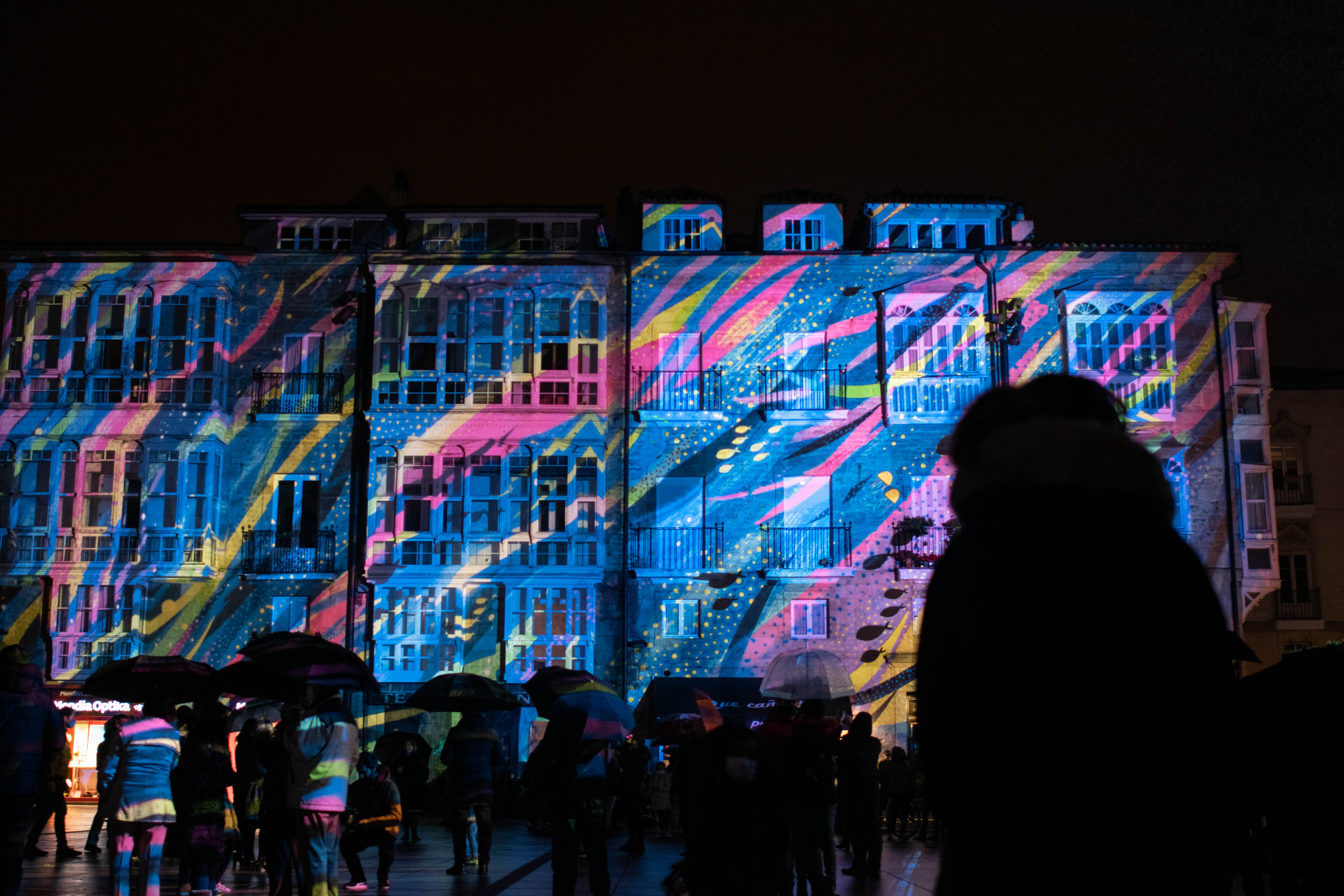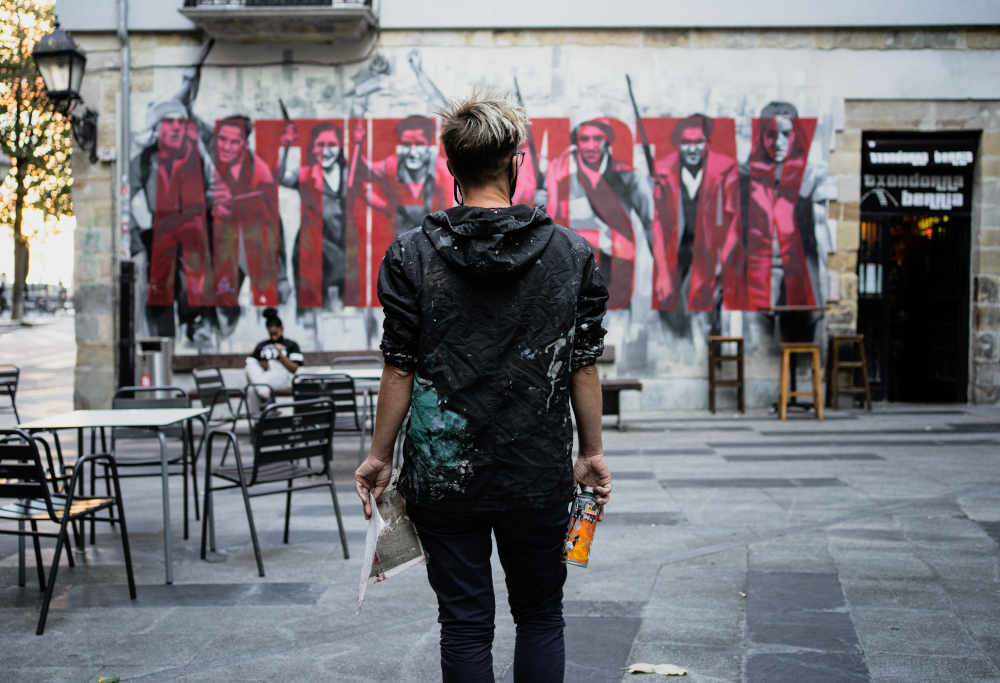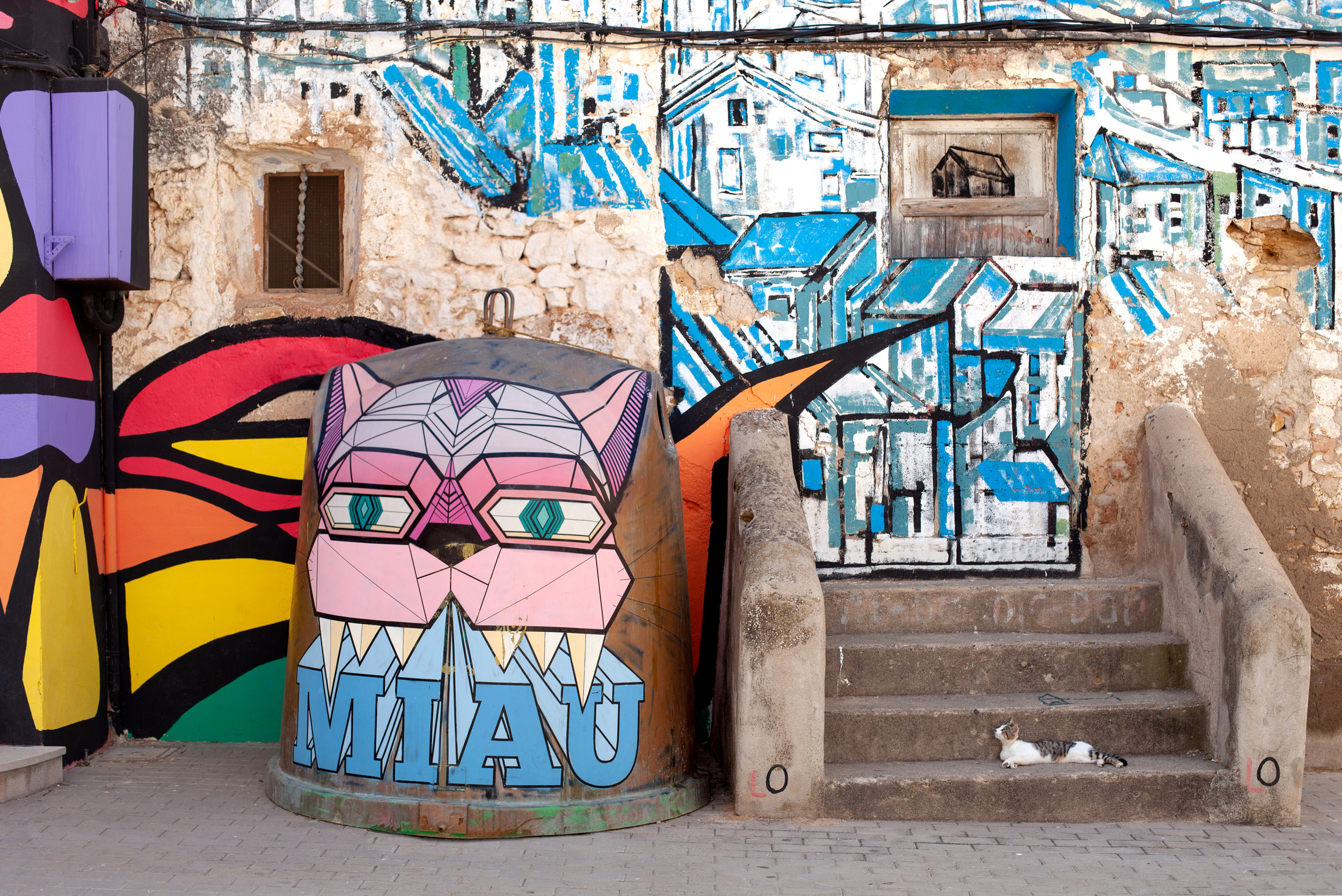Elegant depiction of evil, rounded by the universal smile
- A few years ago the Colombian painter Emerson Cáceres ‘Cacerolo’ drew a portrait of the artist Salvador Dalí, with all his face in black and white, except in the area of the lips. He painted it red, drawing the smile of the criminal Joker from the Batman comics saga. This was his first work in the Guasones collection. Joker, Guasón also in Colombia. Since then he has drawn portraits of dozens of personalities, some on canvas, others on the walls of Bogotá and other cities, with the aim of valuing the art of calle.Sus works reflect “a nonconformism with a disguise of joy”, with social stereotypes at the point of view, as explained by the artist himself.
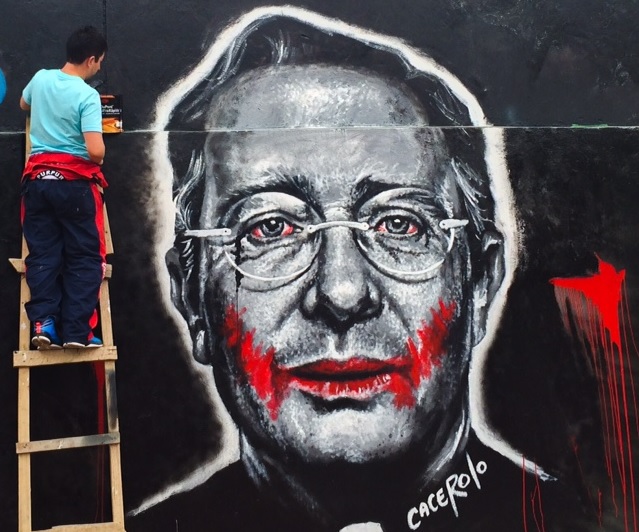
Actually, they're not the only elements that have a touch of color on their lips. He usually draws in red a hair – in honor of his red-haired wife Sara – and white of his eyes. And if you see some clothes, sometimes you paint your neck with purple, and with an intense green the tie, symbol of Joker or the evil Guason. Another feature of portraits is that a tear slips through the right eye. The tear reflects repentance and love the red hair.
“When I draw in my portraits the evil smile of Guasón, I want to represent evil as a fundamental element of the human being,” Cáceres tells us. “I believe that other basic elements of the human soul are feelings.” His drawings show contradictory feelings, for nothing is what it seems. “With these psychological portraits I wanted to deepen the personality of each character,” he says. “And I’ve realized that we all have a corrosive existence of power hidden on a dark and evil side, which occasionally drives us out.”

The egocentric criminal Guasón (or Joker) is a “perfect antagonist” to relate to familiar characters that he portrayed in this section, as Cáceres tells us: “Guasón has become a symbol of contemporary morality and, over time, an archetype, an idea or concept that we can easily identify with it. Despicable, cunning and sometimes absurd. We are seduced by Guason’s ability to imagine the imbalance.” In the artist’s words, Guasón is one of the “most fascinating” figures of contemporary culture: “It’s an elegant and eloquent representation of evil and I want to reflect that in my paintings.”
He has drawn Colombian politicians and heads of state (Álvaro Uribe, Senator, Juan Manuel Santos, former mayor of Bogotá, Gustavo Petro..) and some foreigners (Fidel Castro, Hugo Chávez, Adolf Hitler, Felipe IV...). But he has also made portraits of known painters and musicians, footballers and cyclists, of Pope Francis, who denounce drug trafficking, corruption and femicide... Almost all images have that evil smile, that look that reflects hatred, the tear from the right eye and red hair.
Picasso’s ‘Gernika’, adapted to the Colombian conflict
Last year, coinciding with the 80th anniversary of the Gernika bombing, Cáceres drew a special painting inspired by Picasso’s well-known painting. In this reinterpretation are the Cebu bull (“symbol of the peasant paramilitaries who took the weapons”), the donkeys that the guerrillas used as a bomb, the displaced indigenous people and the dead soldiers. “We have been bombing our country for over 50 years and, despite efforts to achieve peace, we seem to want to continue in the war,” says the artist. He voted in favour of a peace agreement between the FARC-EP and the government, although he does not hold President Santos in high esteem, who does not have either.

elements with close references.
“Picasso’s Gernika is for me the most important painting of the twentieth century,” he tells us. “It very clearly reflects the brutality of war. It was important to bring the painting to our land and bring to light the horrors that we live in Colombia, not to repeat them and support the peace treaty.”
Real art, beyond mere commercial purpose

This painting was exhibited by Cáceres in an art gallery in Bogotá, at the Hiperreal exhibition. They often ask you what your preferences are: street walls or canvases. “Both are necessary and complementary,” he says. “The street is fundamental to reflect our views and seek the reaction of the people, while the exhibition in a gallery helps us to give a commercial character to the work of art. Both formats are very useful.”
In his words, many of the works being done today have nothing but a commercial goal. “The general public wants to see real stories, but modern art doesn’t tell much,” he says. “Artists seek to create an impact with paintings that are easily sold, purely decorative and that do not have contenido.El art has much to say about the world and the facts, painting has to be a mirror of the time in which we live, that is the subject of my paintings, the one I want to portray, the real stories that contemporary painters do not want to tell or that frighten them to tell.”
Questioned about whether, in his opinion, art is a weapon to combat injustices, he answered that no: “It would be a pride to think that the social order can be changed through art. I believe that art is an expression that has its own language, which aims to express emotions and is made with high technical levels. Through art we can reflect what we are and feel. Some artists seek to beat the hearts of viewers. It is in my interest to reach the most intimate and to shake the consciences”.
Claw of censorship
Cáceres drew a large mural on Avenida Suba that runs north of Bogotá. Álvaro Uribe and Juan Manuel Santos, with a motto: Peace with Social Justice. The work received applause, but also strong criticism. “Cacerolo, we know where you live,” they threatened him, “you are an artist funded by the guerrillas.” Within a few months of drawing, the mural was erased. On the other hand, when he showed in a gallery in Miami the portraits of the American authorities Fidel Castro and Hugo Chávez, people wanted to destroy them.

Cáceres tells us that most of her works on the street focus on political issues. “In such a politically polarized country, we often stumble upon censorship by fans who do not understand the message of the work. Not only do we erase portraits, but they threaten us with the anonymity of social media.” Anyway, he says that street art lives very good times in Colombia. “In a short time our capital has become a benchmark, we are up to the big capitals of the world. It is a pleasure to see Colombian artists invited to festivals around the world. Street art is an export product.”
------------ COMICS INSPIRE -----------------
.jpg)
“In my childhood, comics were good means of socialization. There was no internet and less social media. The children of my age found in comics an ideal space to feed the imagination. I believe that new technologies, the media and especially ‘comic film’ are a threat to the comic book in magazine format. The world is changing, but it still needs and creates heroes and criminals.”
Zerbitzu sekretuen alorrean erabili ohi diren OSINT teknikak erabiliko dituen enpresa bat kontratatzeko proiektua lizitaziora atera du Gasteizko Udalak, Arabako Alea-k jakitera eman duenez.
These cold nights of November the street of Vitoria does not illuminate the moons, but the shows of the festival of light Umbra. In these short days of little light, the festival has allowed us to enter the world of the art of light, where the public has been able to experience... [+]









